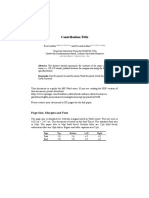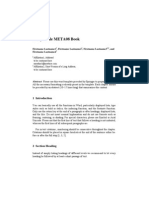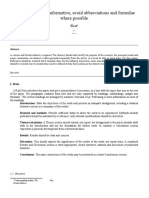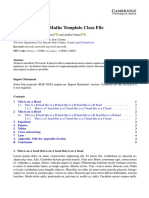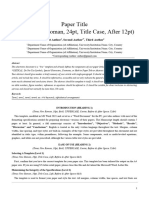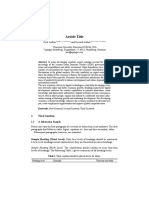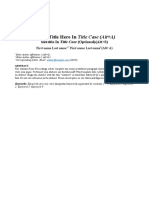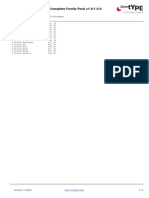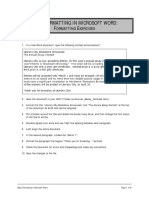Contribution Title
First Author1[0000-1111-2222-3333] and Second Author2[1111-2222-3333-4444]
1
Princeton University, Princeton NJ 08544, USA, Email ID:
2
O.P. Jindal Global University, Haryana, India Email ID
Abstract. The abstract should summarize the contents of the paper in short
terms, i.e. Max. 250 words.
Keywords: 10 Keywords
1 First Section
1.1 A Subsection Sample
Please note that the first paragraph of a section or subsection is not indented. The first
paragraphs that follows a table, figure, equation etc. does not have an indent, either.
Subsequent paragraphs, however, are indented.
Sample Heading (Third Level). Only two levels of
headings should be numbered. Lower level headings
remain unnumbered; they are formatted as run-in
headings.
Sample Heading (Forth Level). The contribution should contain no more than four
levels of headings. The following Table 1 gives a summary of all heading levels.
Table 1. Table captions should be placed above the tables.
Heading level Example Font size and style
Title (centered) Lecture Notes 14 point, bold
st
1 -level heading 1 Introduction 12 point, bold
nd
2 -level heading 2.1 Printing Area 10 point, bold
3rd-level heading Run-in Heading in Bold. Text follows 10 point, bold
th
4 -level heading Lowest Level Heading. Text follows 10 point, italic
You may choose to refer to tables in the text, such as table 1. i Note that the table has
been added using the insert table functionality within Word, rather than being an
� 2
image pasted into the document. Because this is created using Word and is fully
editable, it is fine to include in the manuscript itself.
Displayed equations are centered and set on a separate line.
x+y=z (1)
Please try to avoid rasterized images for line-art diagrams and schemas. Whenever
possible, use vector graphics instead (see Fig. 1).
Figures must be high quality resolution and fully editable. Use gray, white and black
colors.
50
45
40 Dat
35 aA
30
25
20
15
10
5
0
0 1 2 3 4 5 6 7 8 9 101112131415161718192021222324252627282930
Fig. 1. A figure caption is always placed below the illustration. Short captions are centered,
while long ones are justified. The macro button chooses the correct format automatically.
For citations of references, please use APA 7 th edition: Citations using labels, or the
author/year convention are also acceptable. The following bibliography provides a
sample reference list with entries for journal articles [1], an LNCS chapter [2], a book
[3], proceedings without editors [4], as well as a URL [5].
Don’t use footnotes, if additional explanation is required, use endnotes.
References
1. Author, F.: Article title. Journal 2(5), 99–110 (2016).
2. Author, F., Author, S.: Title of a proceedings paper. In: Editor, F., Editor, S. (eds.)
CONFERENCE 2016, LNCS, vol. 9999, pp. 1–13. Springer, Heidelberg (2016).
3. Author, F., Author, S., Author, T.: Book title. 2nd edn. Publisher, Location (1999).
� 3
4. Author, F.: Contribution title. In: 9th International Proceedings on Proceedings, pp. 1–2.
Publisher, Location (2010).
5. LNCS Homepage, http://www.springer.com/lncs, last accessed 2016/11/21.
�i
Note that the table is referred to by number, rather than just ‘below’. See Taylor & Francis, ‘Manuscript writing and
formatting guide’ (Taylor & Francis, 2020).







